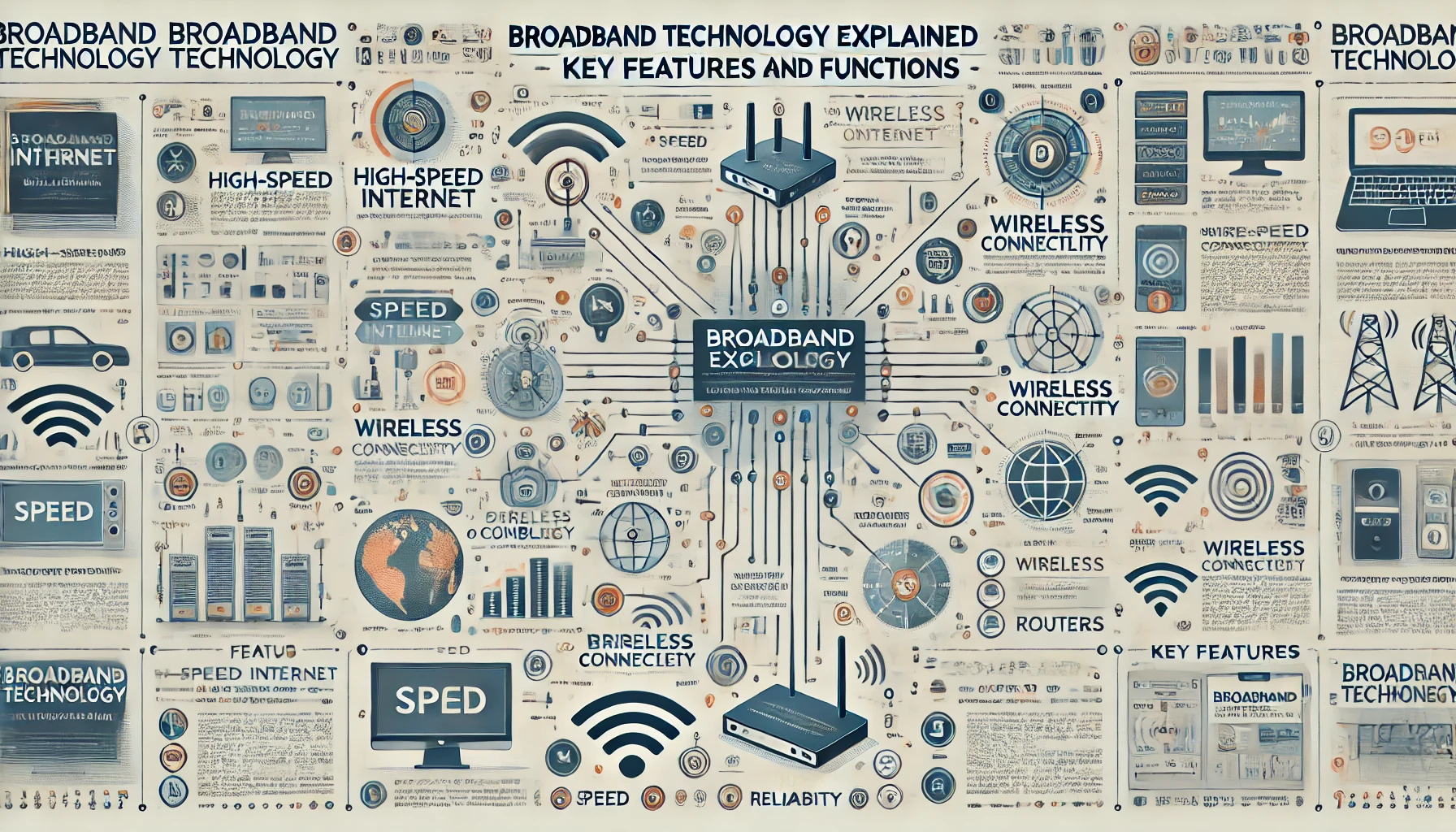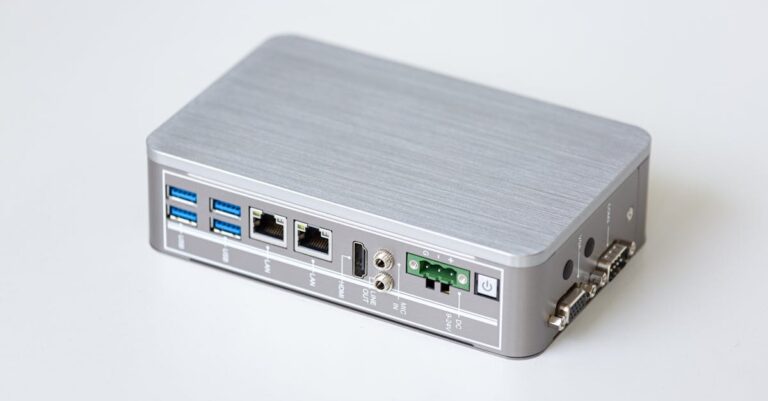Broadband Technology Explained: Key Features and Functions
Welcome to our deep dive into broadband technology! If you’re here, you’re likely curious about how broadband works, its key features, and why it’s so essential in our modern, connected world. Let’s break it down in a way that’s easy to understand, engaging, and informative.
What is Broadband Technology?
Broadband technology refers to high-speed internet access that is always on and faster than traditional dial-up access. The term broadband encompasses several high-speed transmission technologies such as Digital Subscriber Line (DSL), cable modem, fiber optics, wireless, satellite, and Broadband over Powerlines (BPL).
Key Features of Broadband
Understanding the key features of broadband can help you appreciate why it has become a fundamental part of our daily lives.
- High-Speed Internet Access: Unlike dial-up, broadband provides high-speed internet access, which means you can download, upload, and stream data much more quickly. This speed is crucial for activities like video conferencing, online gaming, and streaming movies.
- Always-On Connection: With broadband, your internet connection is always on. There’s no need to dial in or wait to connect, making it much more convenient for both personal and professional use.
- Large Data Transmission: Broadband can handle large amounts of data at once. This capability is vital for businesses that rely on cloud computing and data-heavy applications.
- Variety of Delivery Methods: Broadband can be delivered through various methods, including DSL, cable, fiber optics, wireless, satellite, and powerlines. This versatility ensures that even remote or rural areas can have high-speed internet access.
Functions of Broadband Technology
Broadband technology serves multiple functions that are integral to our daily activities. Let’s explore some of the primary functions:
- Communication: Broadband enables high-quality voice calls, video calls, and conferencing. Services like VoIP (Voice over Internet Protocol) rely on broadband to provide clear and reliable communication.
- Entertainment: From streaming movies and music to online gaming, broadband technology has revolutionized how we consume entertainment. Platforms like Netflix, Spotify, and online gaming services depend on high-speed internet to deliver seamless experiences.
- Education: E-learning and online education platforms have become increasingly popular, especially during times when in-person learning is not feasible. Broadband enables students to access a wealth of educational resources, participate in virtual classrooms, and collaborate on projects in real time.
- Business Operations: For businesses, broadband is essential for operations such as cloud computing, data storage, video conferencing, and remote work. It facilitates efficient communication, data transfer, and collaboration, making it a cornerstone of modern business infrastructure.
- Healthcare: Telemedicine has gained prominence, allowing patients to consult with doctors remotely, access medical records online, and receive health monitoring services. Broadband technology makes these advancements possible by providing the necessary speed and reliability.
Types of Broadband Connections
Broadband connections come in various forms, each with its own set of advantages. Here’s a quick overview:
- DSL (Digital Subscriber Line): Uses telephone lines to deliver high-speed internet. It’s widely available and often more affordable but can be slower compared to other types.
- Cable Modem: Uses the same coaxial cables that deliver cable TV. It offers faster speeds than DSL but can slow down during peak usage times.
- Fiber Optics: Uses light to transmit data through thin glass or plastic fibers. It provides the fastest speeds and highest reliability but may not be available in all areas.
- Wireless: Uses radio signals to connect to the internet. It’s convenient for mobile devices and areas without wired infrastructure but can be affected by weather and obstacles.
- Satellite: Satellites are used to provide internet access, which is ideal for remote locations. However, it can be slower and more expensive due to latency issues.
- Broadband over Powerlines (BPL): Uses electrical power lines to deliver internet. It’s an emerging technology with limited availability but offers the potential for widespread access.
The Future of Broadband Technology
The future of broadband technology looks promising, with ongoing advancements set to enhance speed, reliability, and accessibility. Here are some trends to watch:
- 5G Technology: The rollout of 5G networks promises significantly faster speeds and lower latency, paving the way for innovations like autonomous vehicles, smart cities, and advanced IoT (Internet of Things) applications.
- Expanded Fiber Networks: Efforts to expand fiber optic networks will continue, providing more people with access to ultra-fast and reliable internet.
- Satellite Internet Advances: Companies like SpaceX and Amazon are working on deploying low-earth orbit satellites to provide high-speed internet globally, especially in underserved areas.
- Improved Wireless Technologies: Innovations in wireless technologies will offer better performance and connectivity, supporting the growing number of devices connected to the internet.
Broadband technology is transforming how we live, work, and play by providing high-speed internet access that’s always on and capable of handling large amounts of data. With various delivery methods such as DSL, cable, fiber optics, wireless, satellite, and BPL, broadband ensures that even the most remote areas can stay connected. Whether for communication, entertainment, education, business operations, or healthcare, broadband is the backbone of modern connectivity. The future of broadband looks even more exciting with advancements like 5G, expanded fiber networks, satellite internet, and improved wireless technologies, promising to bring faster, more reliable internet to everyone.
Tips for Choosing the Right Broadband Service
When selecting a broadband service, consider the following tips to ensure you get the best fit for your needs:
- Assess Your Usage: Determine your internet usage patterns. Do you stream a lot of videos, play online games, or work from home? Your usage will dictate the speed and type of broadband service you need.
- Compare Providers: Research different internet service providers (ISPs) in your area. Compare their plans, speeds, customer service, and pricing.
- Check Availability: Not all types of broadband are available in every area. Make sure to check what options are available where you live.
- Read Reviews: Look for reviews from other customers to get a sense of the reliability and performance of the ISPs you’re considering.
- Consider Bundling: Some ISPs offer bundled services, combining internet with TV and phone services. Bundling can save you money and simplify your billing.
Conclusion
Broadband technology is a critical component of our daily lives, enabling us to stay connected, entertained, and productive. By understanding the key features and functions of broadband, you can make informed decisions about the type of service that best meets your needs. As technology continues to advance, the future of broadband promises even greater speed, reliability, and accessibility, ensuring that we can all stay connected in an increasingly digital world.
Feel free to reach out if you have any questions or need further information on broadband services. Stay connected and enjoy the high-speed world of broadband!







